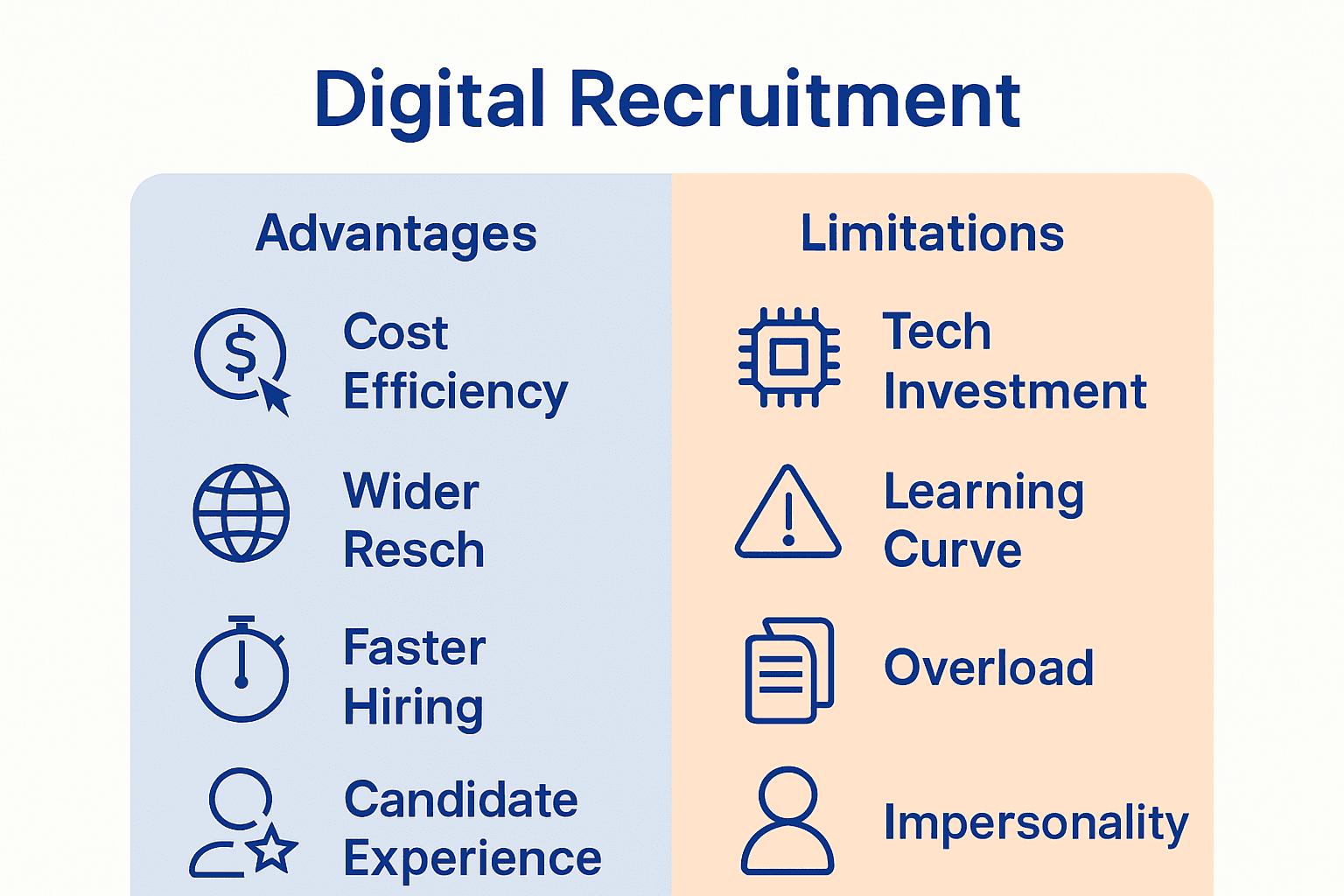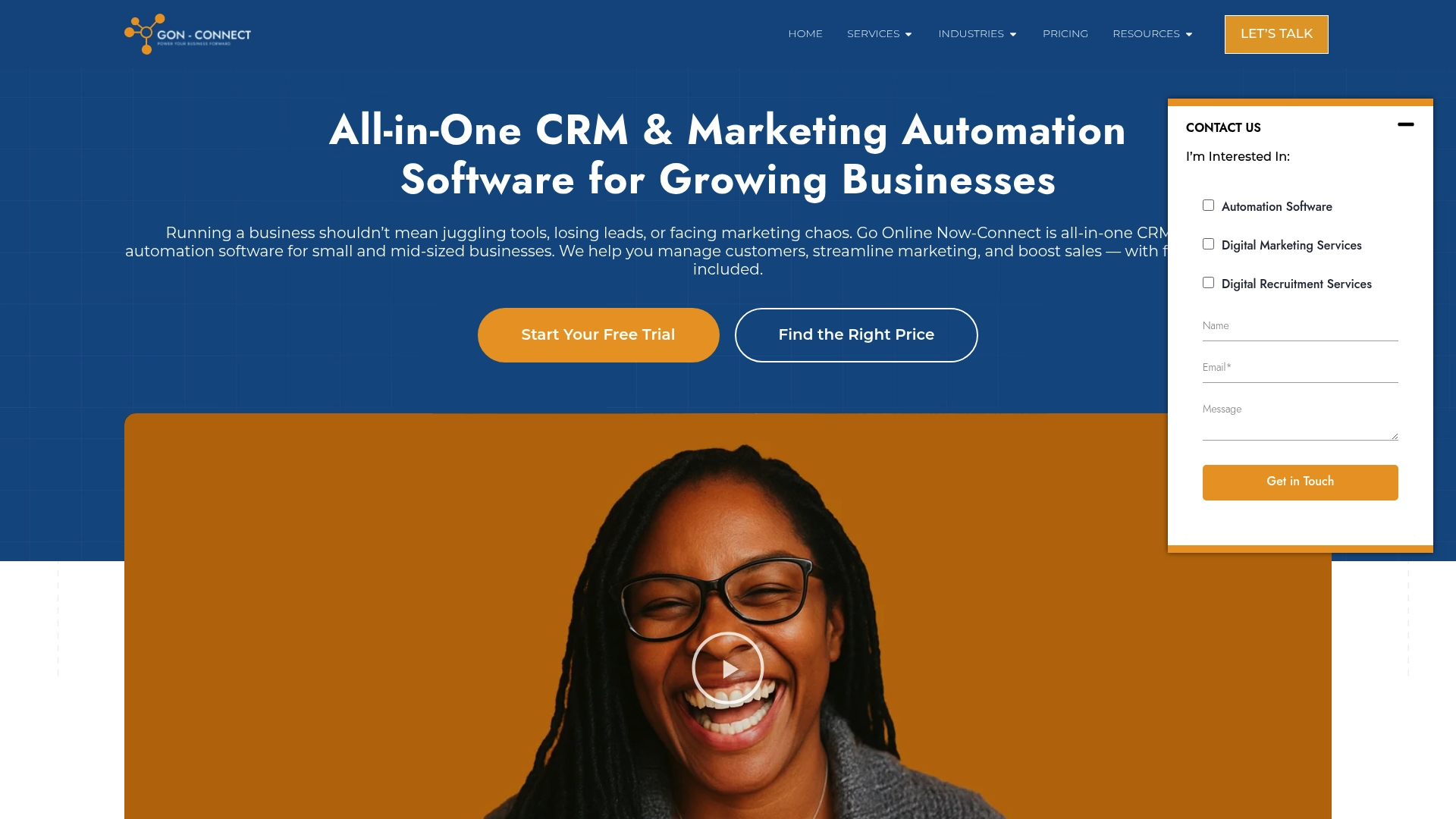Did you know that over 80 percent of companies now use digital platforms to source and hire new talent? This shift is transforming the way small businesses compete for the best candidates and manage their hiring process. With smart tools like AI screenings and mobile applications, even smaller teams can reach wider talent pools, cut recruitment costs, and make faster, data-driven decisions that keep them ahead in a crowded job market.
Digital Recruitment Defined and Key Concepts
Digital recruitment represents a transformative approach to talent acquisition that leverages online technologies and platforms to connect businesses with potential candidates. According to Wikipedia, e-recruitment is the process of selecting and hiring candidates through online services, particularly the Internet, which has rapidly evolved to include sophisticated digital tools and platforms.
At its core, digital recruitment encompasses several key technological strategies that streamline hiring processes. These typically include online job postings, digital resume screening, automated candidate matching, and virtual interviewing capabilities.
 As Wikipedia highlights, artificial intelligence is increasingly playing a critical role in these processes, helping organizations automate aspects of recruitment like resume screening and candidate evaluation while simultaneously reducing potential human biases.
As Wikipedia highlights, artificial intelligence is increasingly playing a critical role in these processes, helping organizations automate aspects of recruitment like resume screening and candidate evaluation while simultaneously reducing potential human biases.
For small to medium-sized businesses (SMBs), digital recruitment offers significant advantages:
- Expanded Talent Pools: Access candidates beyond traditional geographic limitations
- Kostenefficiëntie: Reduce expenses associated with traditional recruitment methods
- Speed and Automation: Accelerate candidate screening and selection processes
- Datagestuurde besluitvorming: Utilize advanced analytics for more informed hiring choices
Modern digital recruitment strategies integrate multiple technologies to create comprehensive talent acquisition ecosystems. These platforms now combine applicant tracking systems, AI-powered screening tools, video interviewing platforms, and comprehensive candidate management solutions – transforming how businesses discover, evaluate, and onboard new talent.
Businesses looking to optimize their digital recruitment approach can explore our comprehensive guide on digital recruitment solutions to learn more about implementing these cutting-edge strategies effectively.
Major Types of Digital Recruitment Channels
Digital recruitment has transformed how businesses discover and attract talent, offering multiple sophisticated channels that extend far beyond traditional hiring methods. According to Wikipedia, social recruiting has emerged as a powerful approach that utilizes social media platforms like LinkedIn, Facebook, and Twitter to identify, attract, and engage potential candidates more interactively and expansively.
The primary digital recruitment channels can be categorized into several key strategies:
- Professional Networking Platforms: LinkedIn, Xing, and industry-specific professional networks
- Social Media Recruiting: Leveraging Facebook, Twitter, and Instagram job postings
- Job Boards and Aggregators: Indeed, Monster, Glassdoor, and specialized industry job sites
- Company Career Pages: Dedicated recruitment sections on corporate websites
- Recruitment Marketing Platforms: Specialized tools for employer branding and candidate engagement
Mobile recruiting represents another critical channel in digital recruitment, involving the use of mobile technology to connect with potential candidates. This approach includes mobile-optimized career sites, text message recruitment, dedicated mobile apps, and social media platforms accessible on mobile devices, enabling recruiters to reach candidates more efficiently in our increasingly mobile-centric world.
Small to medium-sized businesses can maximize their digital recruitment efforts by strategically combining these channels. For instance, a company might use LinkedIn for professional networking, leverage Facebook for broader reach, and optimize their mobile application process to capture tech-savvy candidates.
Here’s a comparison of the major digital recruitment channels for small businesses:
| Channel Type | Example Platforms | Key Advantages | Notable Limitations |
|---|---|---|---|
| Professional Networking Platforms | LinkedIn |
Access skilled professionals Industry connections |
May be niche or limited by industry |
| Social Media Recruiting | Facebook |
Wide audience reach Engaging communication |
Potentially less targeted |
| Job Boards and Aggregators | Indeed Monster Glassdoor |
High volume of applicants Easy search |
High competition Application overload |
| Company Career Pages | Corporate websites | Custom branding Direct applicants |
Lower organic reach |
| Recruitment Marketing Platforms | Employer branding tools CRM systems |
Enhanced engagement Targeted campaigns |
Requires upfront investment |
| Mobile Recruiting | Mobile apps Text recruitment |
Reaches candidates anywhere Fast response |
Needs tech optimization |
For a comprehensive exploration of advanced digital recruitment strategies, businesses can explore our guide on effective digital recruitment approaches.
Step-by-Step Digital Recruitment Process Explained
According to research from arXiv, the digital recruitment process follows a systematic approach that transforms traditional hiring methods into a streamlined, technology-driven workflow. This process encompasses several critical stages designed to help small and medium-sized businesses efficiently identify and onboard top talent.
The key steps in the digital recruitment process include:
- Job Posting and Sourcing
- Create compelling, detailed job descriptions
- Publish listings across multiple digital platforms
- Utilize targeted digital advertising to reach potential candidates
- Candidate Screening and Evaluation
- Implement automated application screening tools
- Use AI-powered matching algorithms
- Conduct initial digital assessments and skills tests
- Interview and Selection
- Hefboom asynchronous video interview technologies that allow candidates to record responses
- Conduct live video interviews for final candidate assessments
- Use digital collaboration tools for team interviews and feedback
Modern digital recruitment goes beyond traditional methods by integrating advanced technologies that enhance efficiency and candidate experience.
Small businesses can leverage these tools to compete effectively in talent acquisition, regardless of their size or resources.
Small to medium-sized businesses looking to refine their digital recruitment strategy can explore our comprehensive digital recruitment guide to gain deeper insights into implementing these cutting-edge approaches.
Benefits and Limitations for Small Businesses
According to Wikipedia, digital recruitment presents a transformative opportunity for small businesses, offering a strategic approach to talent acquisition that balances significant advantages with notable challenges. The digital recruitment landscape provides small enterprises with powerful tools to compete effectively in talent acquisition, despite limited resources.
Key Benefits for Small Businesses:
- Kostenefficiëntie: Dramatically reduce traditional recruitment expenses
- Expanded Talent Reach: Access candidates beyond local geographic limitations
- Faster Hiring Cycles: Streamline candidate screening and selection processes
- Enhanced Candidate Experience: Provide modern, technology-driven application methods
Implementing AI in hiring processes can automate routine recruitment tasks, saving small businesses critical time and resources. However, this approach is not without potential drawbacks. The initial technological investment and potential algorithmic biases require careful navigation.
Limitations to Consider:
- Technology Investment: Upfront costs for digital recruitment tools
- Learning Curve: Required technological proficiency for effective implementation
- Potential Information Overload: Managing increased application volumes
- Risk of Impersonal Interactions: Maintaining human touch in digital processes
Small businesses must strategically balance these benefits and limitations, recognizing that digital recruitment is not a one-size-fits-all solution but a customizable approach to talent acquisition.
 For SMBs seeking to optimize their digital recruitment strategy, understanding digital marketing strategies can provide additional insights into effective digital talent acquisition.
For SMBs seeking to optimize their digital recruitment strategy, understanding digital marketing strategies can provide additional insights into effective digital talent acquisition.
Common Challenges and How to Avoid Them
Digital recruitment presents small businesses with sophisticated opportunities alongside complex challenges that require strategic navigation. According to Wikipedia’s insights on artificial intelligence in hiring, the most critical challenge is ensuring algorithmic fairness and mitigating potential biases in AI-driven recruitment technologies.
Key Challenges and Mitigation Strategies:
- Algorithmic Bias Prevention
- Use diverse and representative data sets for AI training
- Conduct regular algorithmic audits
- Maintain transparent human oversight in decision-making
- Implement multi-dimensional candidate evaluation processes
- Candidate Engagement and Privacy
- Respect communication boundaries in social recruiting
- Provide clear opt-in mechanisms for recruitment communications
- Ensure transparent data collection practices
- Protect candidate personal information
- Uitdagingen bij technologische integratie
- Select scalable, user-friendly recruitment platforms
- Invest in staff training for digital recruitment tools
- Start with phased technological implementation
- Continuously evaluate and upgrade recruitment technologies
Successful digital recruitment requires a nuanced approach that balances technological efficiency with human-centric practices. Small businesses must remain adaptable, continuously learning and refining their digital recruitment strategies to attract top talent effectively.
For SMBs looking to enhance their digital recruitment approach, understanding digital marketing strategies can provide additional insights into creating compelling, engaging candidate experiences.
Simplify Your Digital Recruitment and Growth with One Powerful Platform
Struggling to keep up with the fast pace of digital recruitment detailed in the guide? Many SMBs face challenges like managing multiple tools, staying cost-efficient, and ensuring a smooth candidate experience. Your goal is clear: streamlined hiring combined with effective marketing and CRM that frees your time while boosting your talent acquisition efforts.
Go Online Now-Connect understands these pain points and offers a truly all-in-one solution. From automating candidate outreach and nurturing leads to managing your pipeline and marketing campaigns, our platform helps you attract and hire the right talent without the overwhelm or high costs. Experience real human support and a done-for-you setup that gets you running fast and efficient.
Discover how our approach to digitale marketing En virtual assistance complements your recruitment strategy seamlessly.

Take control of your digital recruitment now. Visit Ga nu online and see how you can combine marketing automation, CRM, and recruitment into one simple, affordable platform built for SMBs like yours. Get started today and grow smarter without hassle.
Veelgestelde vragen
What is digital recruitment?
Digital recruitment is a talent acquisition approach that utilizes online technologies and platforms to connect businesses with potential candidates, streamlining the hiring process through tools such as online job postings, automated screening, and virtual interviews.
What advantages does digital recruitment offer for small businesses?
Digital recruitment provides small businesses with cost efficiency, access to a wider talent pool, faster hiring cycles, and the ability to enhance the candidate experience through modern application methods.
How does the digital recruitment process differ from traditional hiring methods?
The digital recruitment process involves a systematic approach utilizing technology for stages like job posting, candidate screening, and interviews, thus increasing efficiency and reducing time spent on manual tasks compared to traditional hiring methods.
What are common challenges in digital recruitment and how can they be addressed?
Common challenges include algorithmic bias, candidate engagement, and technology integration. These can be addressed by ensuring diverse data sets for AI models, maintaining clear communication practices, and providing staff training on recruitment technologies.
Aanbevolen
- Complete Guide to Digital Recruitment Solutions – Go Online Now
- 7 Effective Examples of Digital Recruitment Strategies – Go Online Now
- Understanding Why Digital Marketing for SMBs Matters – Go Online Now
- Understanding Digital Growth Strategies for SMBs – Go Online Now
- Wat is digitale marketing? Het belang ervan begrijpen

